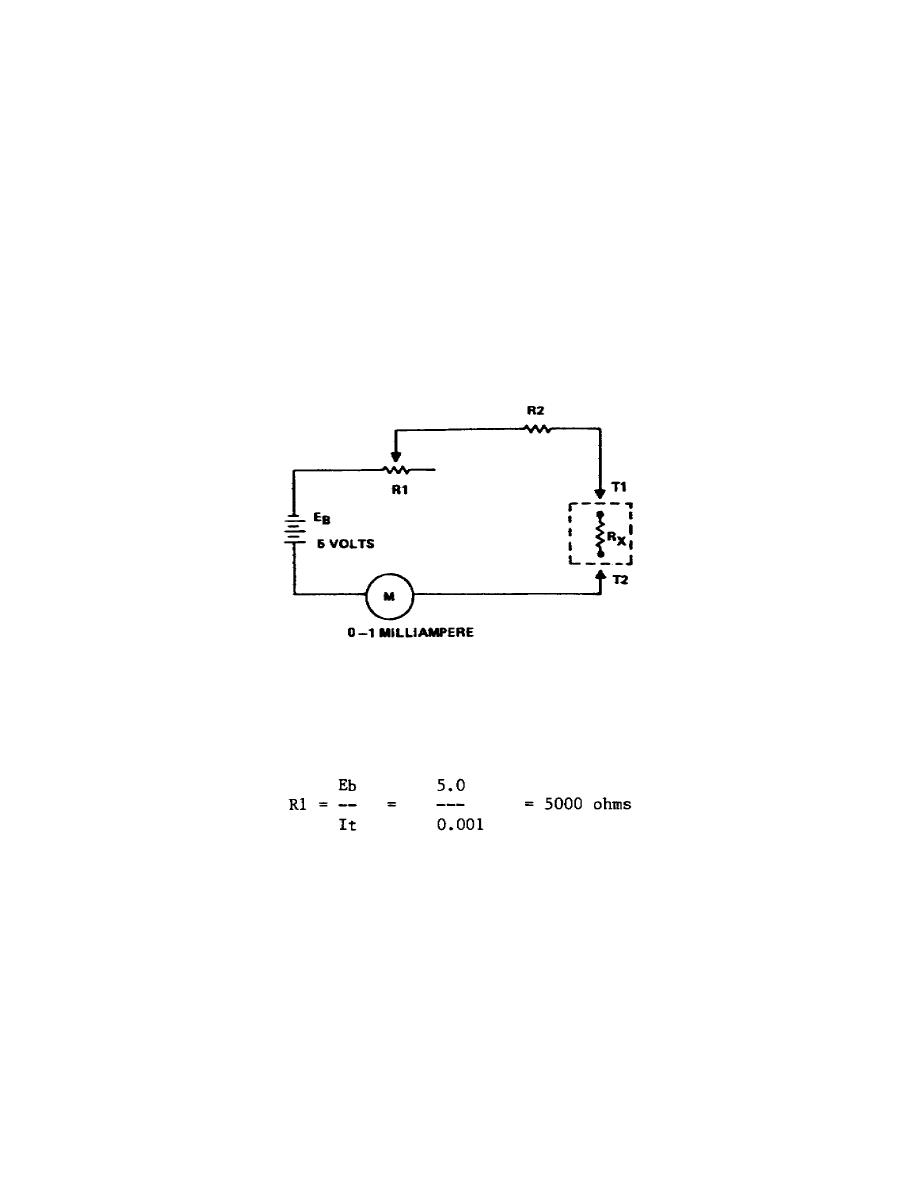
i. When you connect this voltmeter across the 5000-ohm resistor in the
circuit, you put the meter in parallel with this resistor. The total resistance of
the circuit effectively becomes 103,333 ohms. Thus the total current increases to
approximately 1.16 milliamperes, the voltage across R2 increases to approximately
81.2 volts, and the voltage reading on the meter is approximately 38.8 volts.
j. You can avoid loading a circuit by using a voltmeter in which the
resistance is large compared with that of the circuit element across which you are
measuring voltage. If a voltmeter with such high sensitivity is not available, you
can improve accuracy by using a higher range on the voltmeter. For example, if you
used the 0-to 500-voltage range on the meter, the voltage across the resistor R1
would read approximately 47.2 volts.
5.
Ohmmeter.
Despite its usefulness as a resistance-measuring device, the
ohmmeter is comparatively inaccurate.
It is used only where resistance
measurements need not be extremely accurate. A good rule to remember when you are
using an ohmmeter, such as shown in Figure 1-17, is that the highest reading that
can be obtained with acceptable accuracy is approximately ten times the mid-scale
reading, and the lowest reading is approximately one-tenth of the mid-scale reading.
Figure 1-17.
Typical ohmmeter scale
a. To determine the range of resistance within the above limits, you must
determine what the total resistance of the meter circuit is to limit the current to
1 milliampere (full-scale deflection) when points T1 and T2 are connected together
(short-circuited). Full-scale deflection is obtained when R1 is 5000 ohms.
b. Where Eb is the battery voltage and it is 1 milliampere
(meter
sensitivity), the above calculation reveals that the sum of the adjustable
18



 Previous Page
Previous Page
